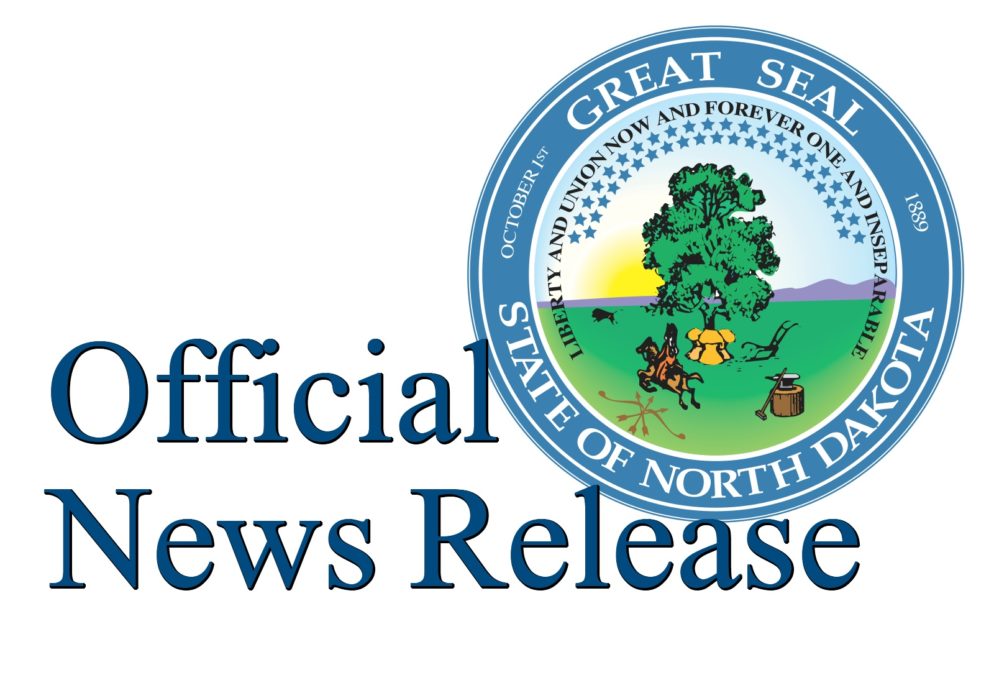The North Dakota Department of Health (NDDoH) and Agriculture (NDDA), Animal Health Division, emphasize that the public should be cautious in exposing themselves, pets or livestock to blue-green algae, also known as cyanobacteria, which can thrive in hot summer weather. Ingesting affected water can cause illness in people and animals, and can result in death. Cyanotoxins have been positively identified at Homme Dam in Walsh County, but can occur anywhere in the state.
Recent tests have indicated that the level of cyanotoxins in Homme Dam near Park River is significantly higher than was initially reported. The higher levels of toxins make the water at the dam a significant threat to human and animal health, and officials warn against any exposure to the water at that recreational site.
Blue-green algae discolor the water they live in, and can cause foam, scum or mats to appear on the surface. NDDoH can test water for evidence of toxins, and if they are detected, can issue warnings to the public. However, because it can take time to test water, people are urged to err on the side of caution and avoid waters that look discolored or scummy, or that have a foul odor.
“Blue-green algae normally can be found in many lakes and pasture watering holes,” said State Veterinarian Dr. Susan Keller. “Reports of these high levels of cyanotoxins in Walsh County remind us to be on the alert for algae blooms throughout the state.”
Blue-green algae blooms can produce poisonous cyanotoxins that, if swallowed, can cause severe diarrhea and vomiting; numb lips, tingling fingers and toes; dizziness; or rashes, hives or skin blisters. Children are at higher risk than adults for illness because their smaller size can allow them to get a relatively larger dose of toxin. People who develop symptoms and have had exposure to cyanobacteria should consult with their health care provider.
Signs of livestock poisoning include weakness, staggering, difficulty breathing, convulsions and ultimately death, which is often all that livestock producers witness.
The Department of Health and the Department of Agriculture, Animal Health Division, recommend these steps to avoid exposure to cyanotoxins:
- Respect any advisories announced by public health authorities. If you see posted signs or hear messages to stay out of a certain body of water, respect the warning.
- Do not swim, water ski or boat in areas where the water is discolored or where you see foam, scum or mats of green or blue-green algae on the water.
- If you accidentally swim in water that might have a cyanobacteria bloom, rinse off with fresh water as soon as possible.
- Do not let pets or livestock swim in or drink from areas where the water is discolored or where you see foam, scum or mats of algae on the water.
- If pets (especially dogs) swim in scummy water, rinse them off immediately – do not let them lick the algae (and toxins) off their fur.
- Don’t irrigate lawns or golf courses with pond water that looks scummy or smells bad.
For more information about the effects of blue-green algae blooms on pets and livestock, contact the NDDA’s Animal Health Division at 701.328.2655. For more information on public health issues, contact Mike Ell, North Dakota Department of Health, at 701.220.5025. Livestock producers should contact their local veterinarian or extension agent for advice on mitigating risks. A NDSU Extension Service publication on blue-green algae is available at https://www.ag.ndsu.edu/drought/livestock-poisoning/watch-for-blue-green-algae.




